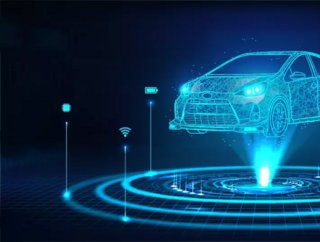Connectivity to be a dominant driver of automobile value

Modern internal combustion engines found in today’s cars are made up of thousands of parts. Procuring and assembling those parts is no short order. Automotive original equipment manufacturers (OEMs) have relied heavily on the expertise required to manufacture such a sophisticated piece of machinery as their primary mechanism to ward off competition from new entrants in the auto industry.
In large part, the value of cars has been driven (no pun intended) by this know-how and capability of OEMs. But this is no longer the case.
The “smarts” within cars are becoming a large part of what drives consumer demand. Cars are being integrated with advanced driver-assistance systems that improve safety and reliability, ever-advancing autonomous driving capabilities, and in-vehicle service and entertainment. Some even have the ability to receive software updates that enable new features over time in much the same way a smartphone is updated. Many of these features are still in their infancy. As they mature, they may very well become the predominant value driver of an automobile.

Think about it – if people no longer have to drive themselves, how much value will they place on the engine under the hood. And with nothing to do in a fully autonomous car other than wait to arrive at your intended destination, the ability to watch a show, play a game, or even work from the car will undoubtedly become a necessity.
One of the most important enabling technologies behind these value drivers is connectivity. Much of the functionalities of these smart features depend on the vehicle being able to communicate at high speeds, with low latency, and ultra-reliability. For example, autonomous driving capabilities will need to exchange information with other cars, pedestrians and infrastructure while at the same time receiving updates to maps. In-vehicle service and entertainment will need to stream shows and allow for face-to-face video conferencing.

5G cellular technology can provide such connectivity. The problem for automotive OEMs is that 5G and other, earlier cellular technologies are not technologies within their wheelhouse. These are standardised technologies that have been heavily patented by tech companies, like Qualcomm, Ericsson and Nokia, that actively participated in their development.
If they haven’t already, Automotive OEMs need to consider getting in the game and investing in this key enabling technology. Patent royalties are generally determined based on the value of a patented feature to the end product. 5G and future cellular releases will be the basis for an increasingly large piece of the value pie of cars. With patents of their own in this technology space – gained either organically or through strategic acquisitions – automotive OEMs can retain profits through favourable negotiations and collaborations with leading tech companies.
The shift in the automotive value chain may be happening sooner than in other industries but similar shifts are almost inevitable in other spaces. Medical device manufacturers, office equipment manufacturers, and manufacturers of other consumer electronic devices will likely see similar changes in value drivers based on connectivity being introduced into their devices. These players may also want to take a forward-thinking and proactive approach to their IP strategy to meet these challenges head-on.
About Ofinno
Ofinno is a leading research and development lab for 5G/6G, IEEE 802.11, and video compression technologies that deliver the future of connectivity. Home to expert innovators, talented patent attorneys, and some of the world’s most prolific inventors, Ofinno helps companies stay ahead of the technological curve by outsourcing their R&D from ideation to delivery.






